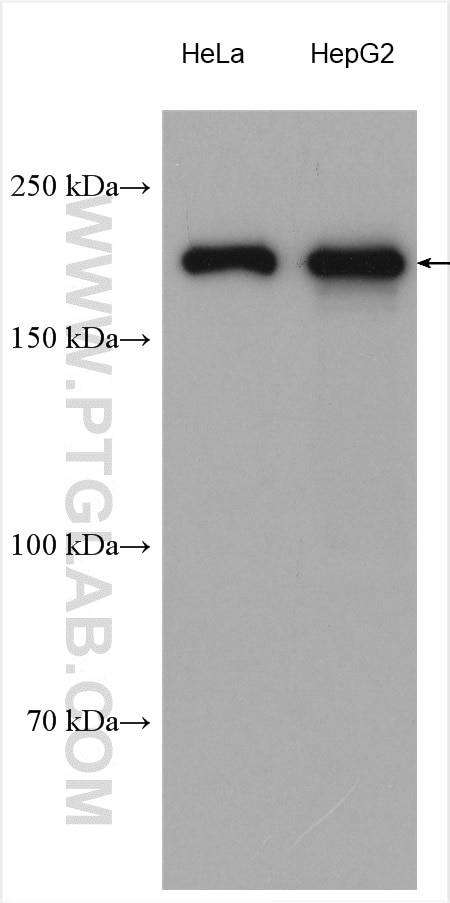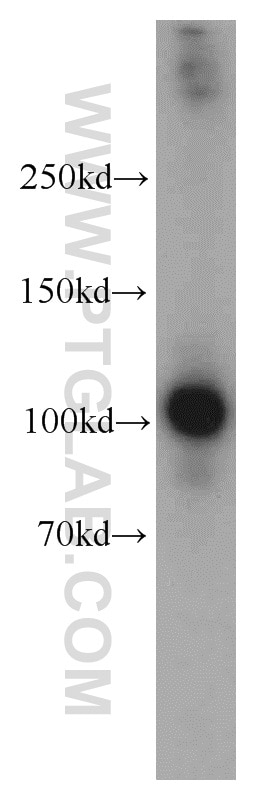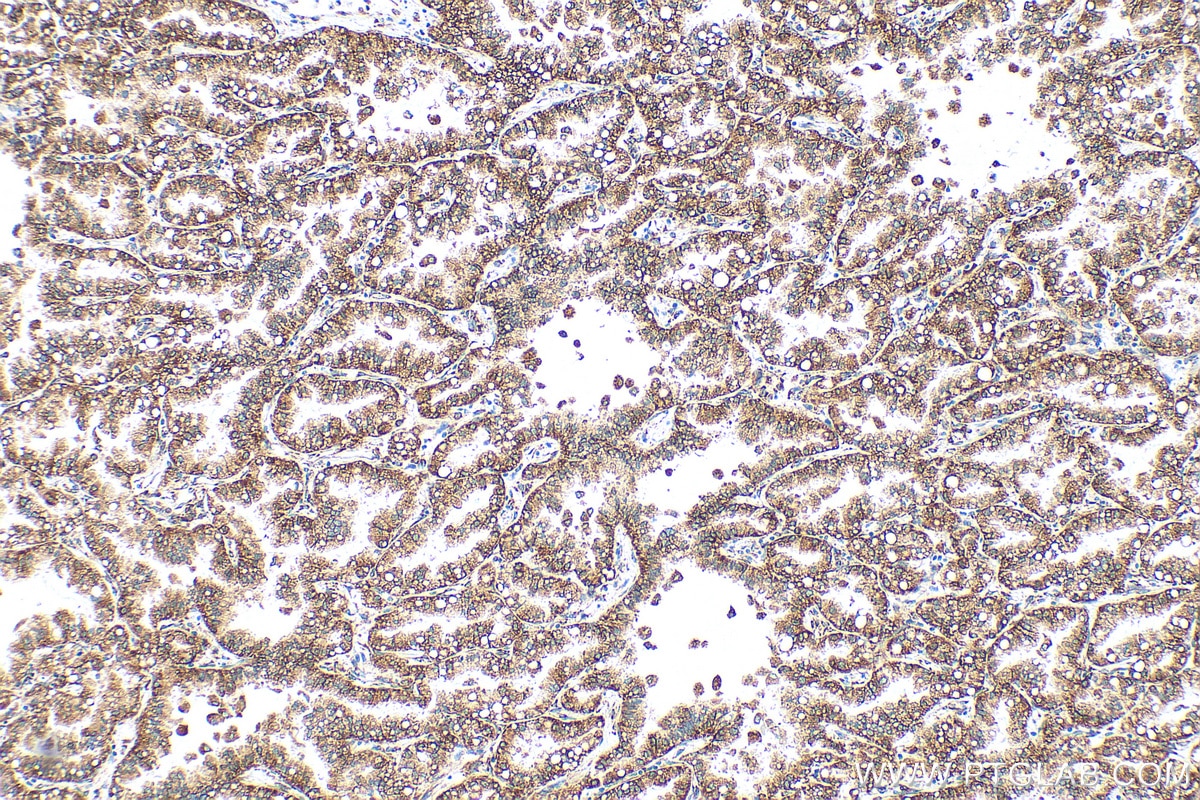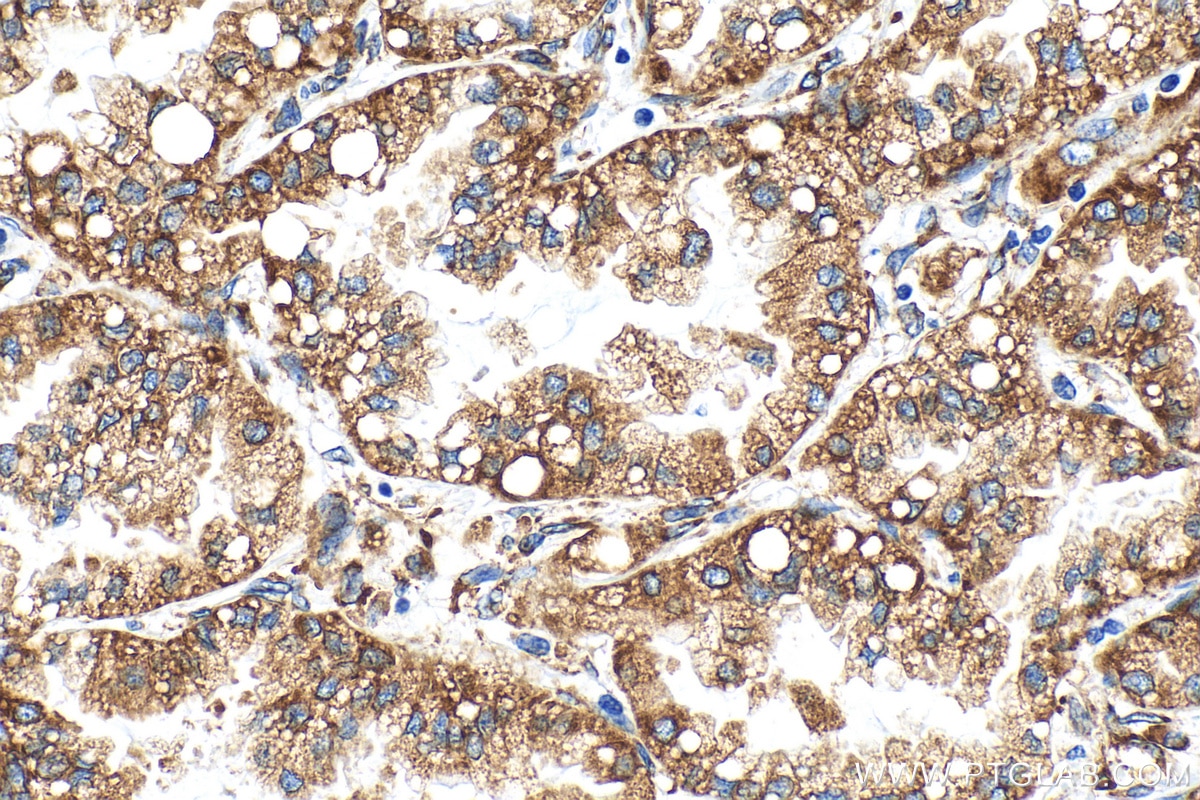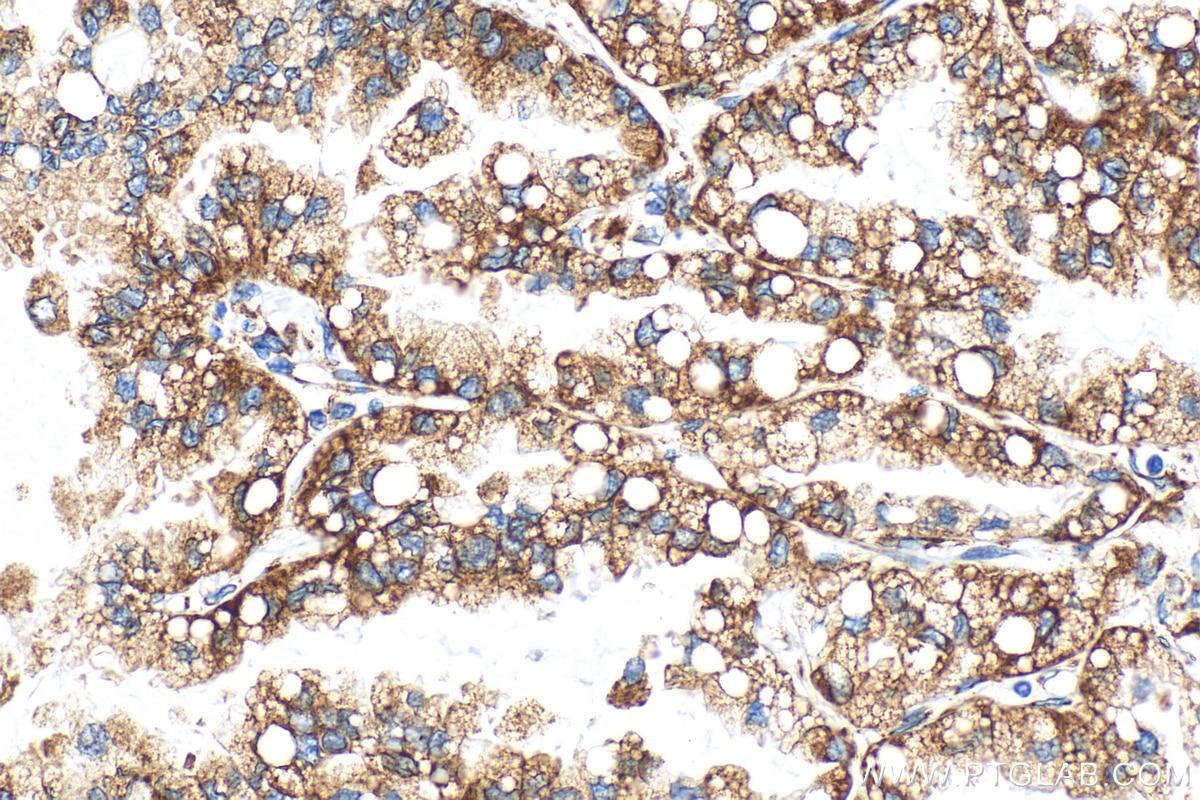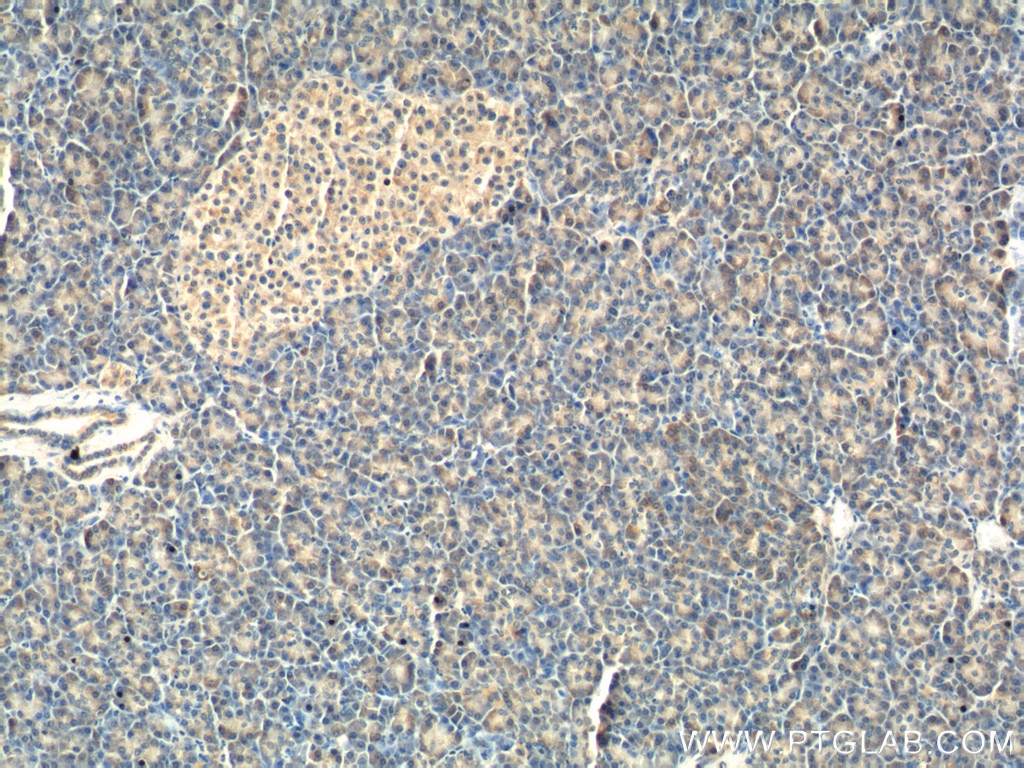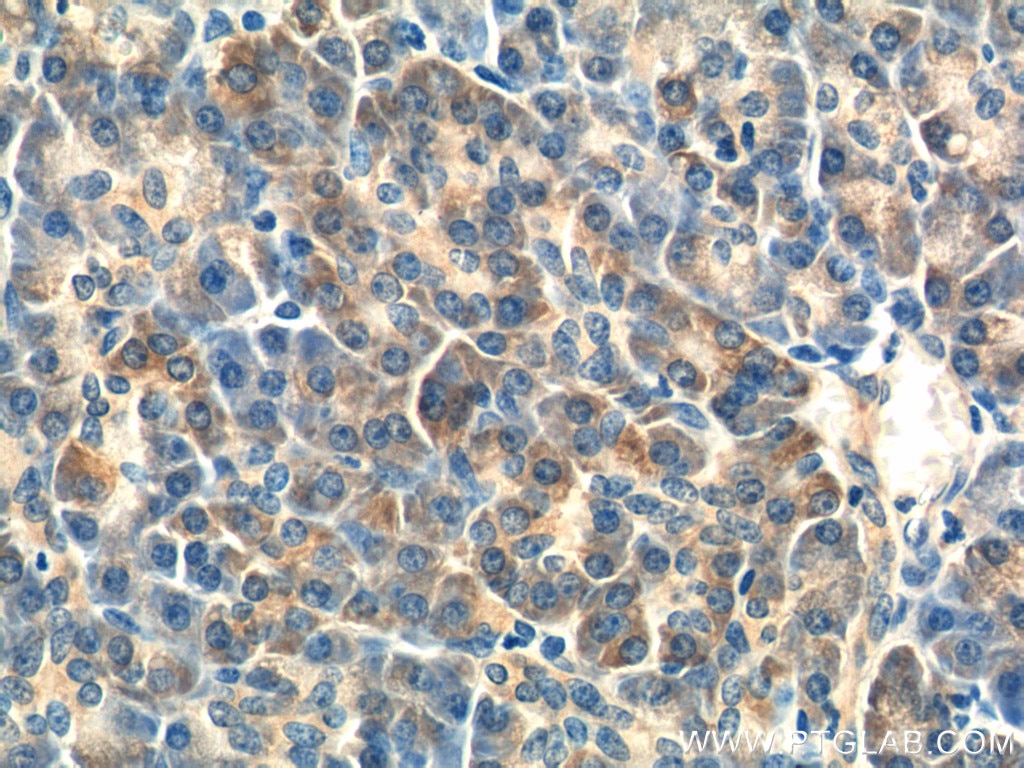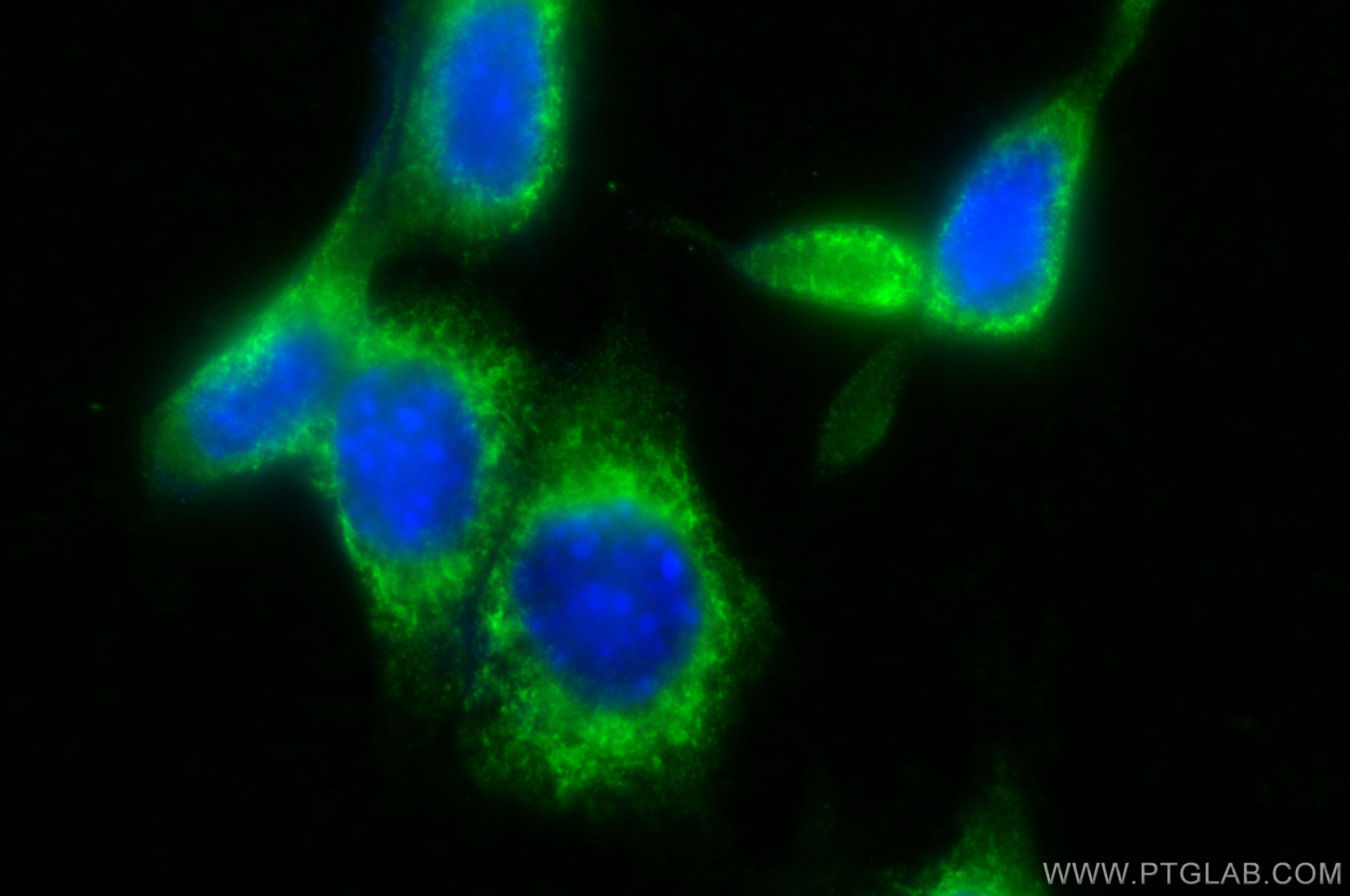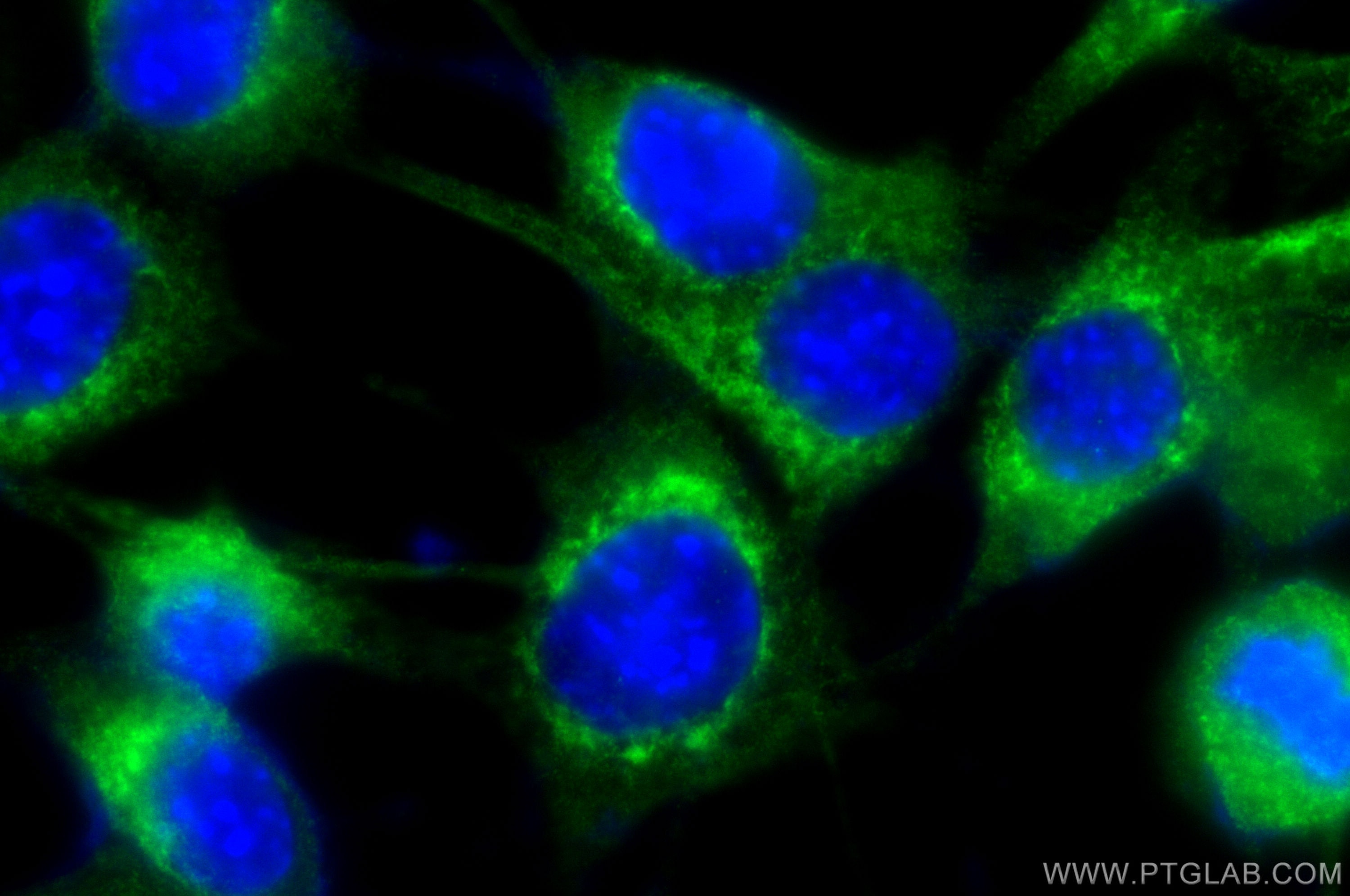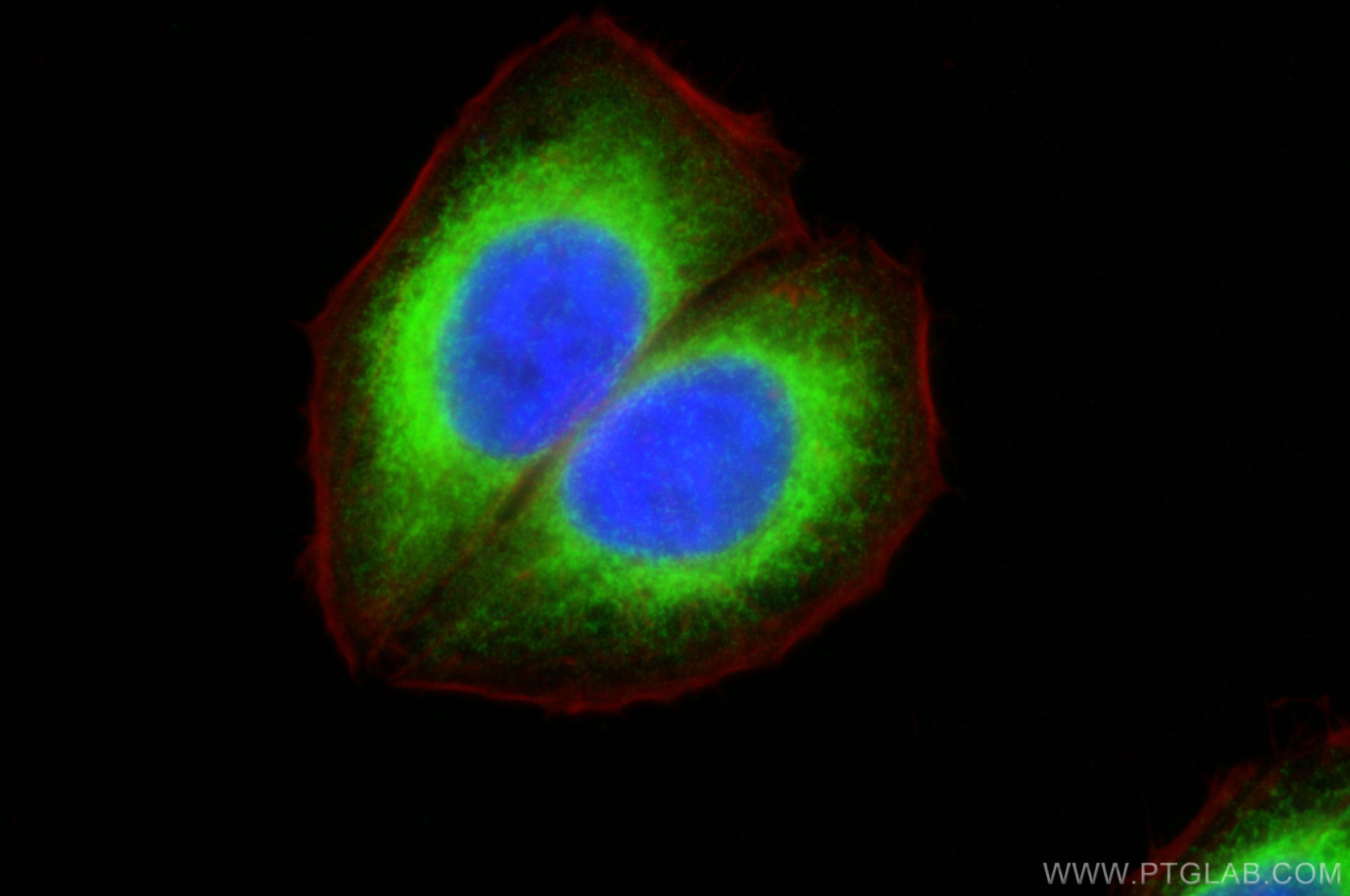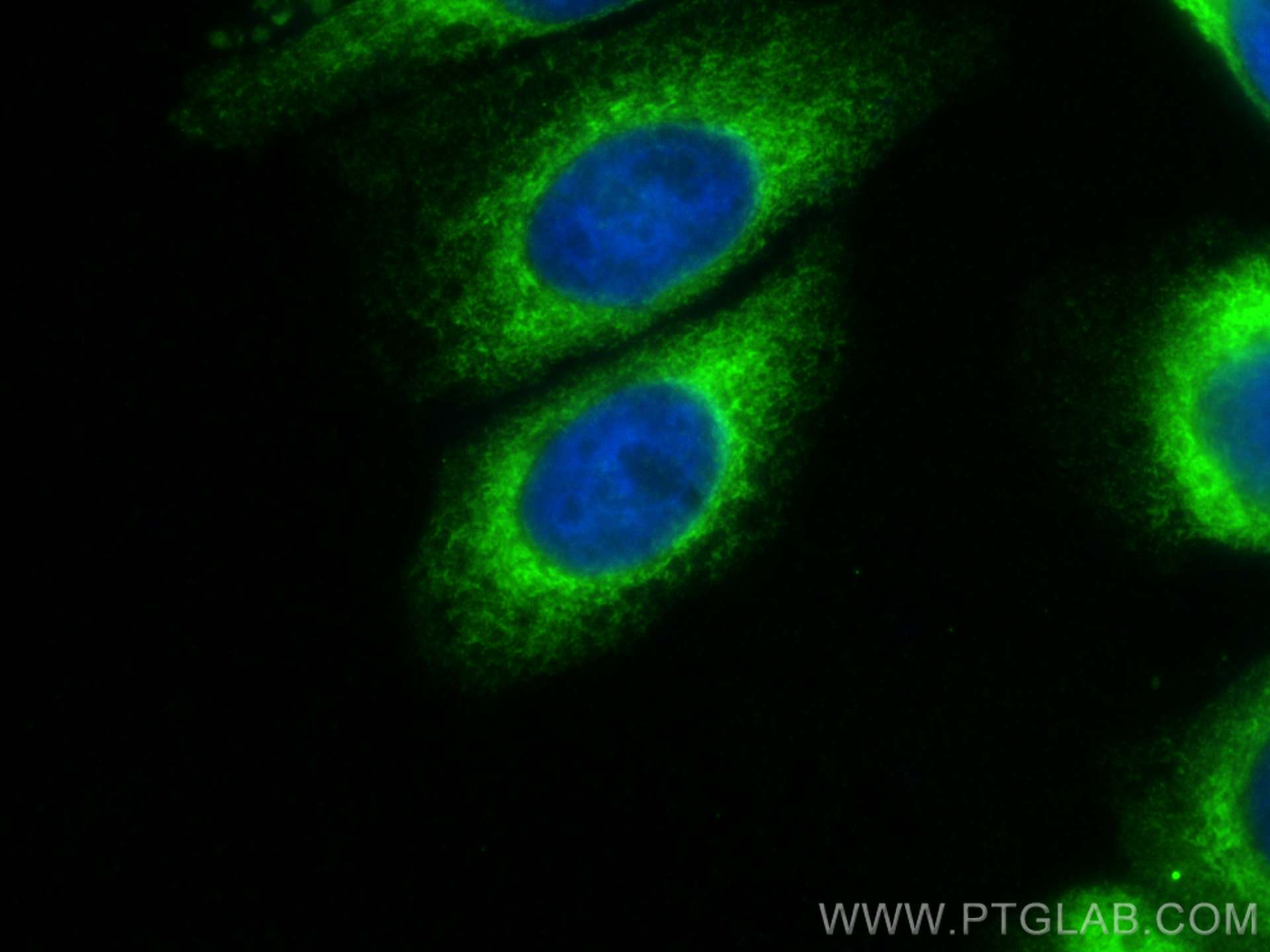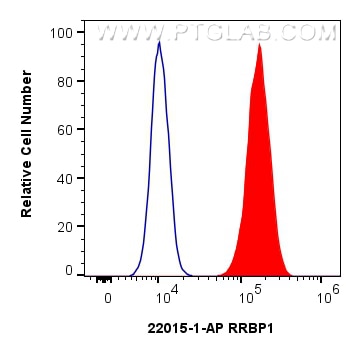- Phare
- Validé par KD/KO
Anticorps Polyclonal de lapin anti-RRBP1
RRBP1 Polyclonal Antibody for WB, IHC, IF/ICC, ELISA
Hôte / Isotype
Lapin / IgG
Réactivité testée
Humain, souris
Applications
WB, IHC, IF/ICC, IP, ELISA
Conjugaison
Non conjugué
N° de cat : 22015-1-AP
Synonymes
Galerie de données de validation
Applications testées
| Résultats positifs en WB | cellules HeLa, cellules HepG2, tissu pancréatique de souris |
| Résultats positifs en IHC | tissu de cancer du poumon humain, tissu pancréatique humain il est suggéré de démasquer l'antigène avec un tampon de TE buffer pH 9.0; (*) À défaut, 'le démasquage de l'antigène peut être 'effectué avec un tampon citrate pH 6,0. |
| Résultats positifs en IF/ICC | cellules NIH/3T3, cellules HepG2 |
| Résultats positifs en FC (Intra) | cellules BxPC-3, |
Dilution recommandée
| Application | Dilution |
|---|---|
| Western Blot (WB) | WB : 1:2000-1:12000 |
| Immunohistochimie (IHC) | IHC : 1:2000-1:8000 |
| Immunofluorescence (IF)/ICC | IF/ICC : 1:50-1:500 |
| Flow Cytometry (FC) (INTRA) | FC (INTRA) : 0.25 ug per 10^6 cells in a 100 µl suspension |
| It is recommended that this reagent should be titrated in each testing system to obtain optimal results. | |
| Sample-dependent, check data in validation data gallery | |
Applications publiées
| KD/KO | See 3 publications below |
| WB | See 5 publications below |
| IHC | See 1 publications below |
| IF | See 4 publications below |
| IP | See 1 publications below |
Informations sur le produit
22015-1-AP cible RRBP1 dans les applications de WB, IHC, IF/ICC, IP, ELISA et montre une réactivité avec des échantillons Humain, souris
| Réactivité | Humain, souris |
| Réactivité citée | Humain, souris |
| Hôte / Isotype | Lapin / IgG |
| Clonalité | Polyclonal |
| Type | Anticorps |
| Immunogène | RRBP1 Protéine recombinante Ag16648 |
| Nom complet | ribosome binding protein 1 homolog 180kDa (dog) |
| Masse moléculaire calculée | 1410 aa, 152 kDa |
| Poids moléculaire observé | 180 kDa |
| Numéro d’acquisition GenBank | BC128577 |
| Symbole du gène | RRBP1 |
| Identification du gène (NCBI) | 6238 |
| Conjugaison | Non conjugué |
| Forme | Liquide |
| Méthode de purification | Purification par affinité contre l'antigène |
| Tampon de stockage | PBS with 0.02% sodium azide and 50% glycerol |
| Conditions de stockage | Stocker à -20°C. Stable pendant un an après l'expédition. L'aliquotage n'est pas nécessaire pour le stockage à -20oC Les 20ul contiennent 0,1% de BSA. |
Informations générales
Ribosome-binding protein 1 (RRBP1) is an endoplasmic reticulum membrane protein. It is a 1410 amino acid protein composed of a hydrophobic NH2-terminus that includes a transmembrane domain, a highly conserved tandem repeat (ribosome-binding domain), and an acidic coiled-coil COOH-terminal domain. RRBP1 acts as a ribosome receptor and mediates interaction between the ribosome and the endoplasmic reticulum membrane. It is also involved in early cardiac morphogenesis(PMID: 22709790; 8812507; 7686155). RRBP1 has two different isoforms with molecular weights of 150 kDa and 109 kDa.
Protocole
| Product Specific Protocols | |
|---|---|
| WB protocol for RRBP1 antibody 22015-1-AP | Download protocol |
| IHC protocol for RRBP1 antibody 22015-1-AP | Download protocol |
| IF protocol for RRBP1 antibody 22015-1-AP | Download protocol |
| FC protocol for RRBP1 antibody 22015-1-AP | Download protocol |
| Standard Protocols | |
|---|---|
| Click here to view our Standard Protocols |
Publications
| Species | Application | Title |
|---|---|---|
Sci Adv Oncoprotein SND1 hijacks nascent MHC-I heavy chain to ER-associated degradation, leading to impaired CD8+ T cell response in tumor. | ||
Mol Oncol USP35 mitigates endoplasmic reticulum stress-induced apoptosis by stabilizing RRBP1 in non-small cell lung cancer.
| ||
J Virol The Japanese encephalitis virus NS1 protein concentrates ER membranes in a cytoskeleton-independent manner to facilitate viral replication | ||
Acta Biochim Biophys Sin (Shanghai) Thymosin beta 4 silencing suppresses proliferation and invasion of non-small cell lung cancer cells by repressing Notch1 activation. | ||
Cancer Manag Res RRBP1 is highly expressed in prostate cancer and correlates with prognosis. | ||
Science Endosomal lipid signaling reshapes the endoplasmic reticulum to control mitochondrial function
|
